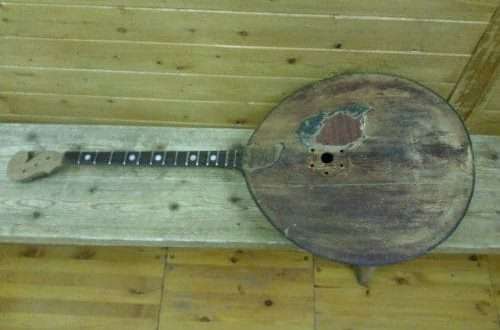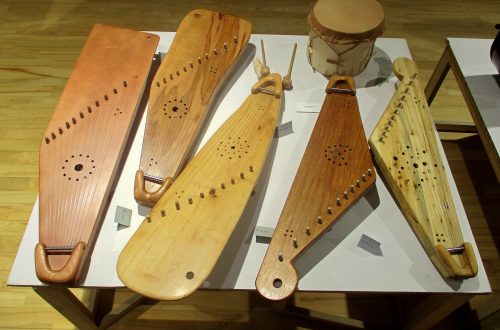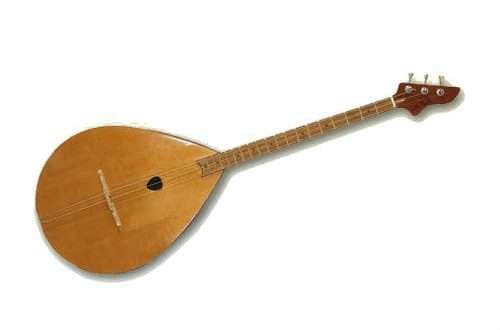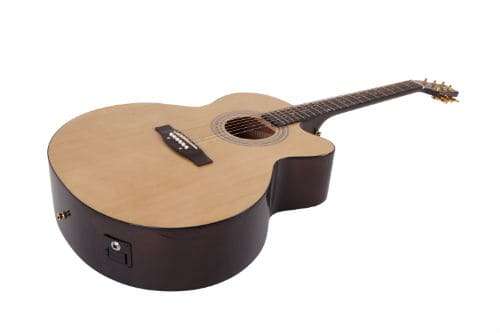
Electro-acoustic guitar: instrument composition, principle of operation, history, use
Bards, pop singers, jazzmen often take the stage with a guitar in their hands. A person who is uninitiated in the subtleties and peculiarities of performing techniques may think that this is ordinary acoustics, exactly the same as in the hands of the guys in the yard or novice musicians. But in fact, these artists play a professional musical instrument called an electro-acoustic guitar.
Устройство
The body is the same as the classic acoustics – wooden with wavy notches and a round resonator hole under the strings. The neck is flat on the working side and ends with a head with tuning pegs. The number of strings varies from 6 to 12.

The difference with an acoustic guitar lies in the structural features of the composition, the presence of electrical components that are responsible for sound conversion and sound quality. This difference allows you to reproduce the clear sound of an acoustic guitar with amplified volume.
A piezo pickup with a pickup is installed under the threshold inside the case. A similar device is found on electric guitars, but it works at different frequencies and is only used for instruments with metal strings.
A battery compartment is installed closer to the neck so that the musician can work on a stage that is not connected to electrical power. The timbral block crashes into the side surface. He is responsible for controlling the sound of electroacoustics, allows you to adjust the timbre, expand the technical capabilities of the instrument.
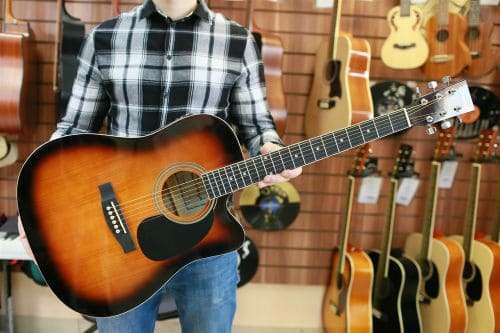
Principle of operation
The electric acoustic guitar is a member of the string family. The principle of operation is the same as that of acoustics – the sound is extracted by plucking the strings or hitting them. The advantage of electroacoustics in the extended capabilities of the instrument. It can be played without being connected to electricity, which is not possible with an electric guitar. In this case, the sound will be identical with the acoustics. Or by connecting to a mixer and a microphone. The sound will become closer to electronic, louder, juicier.
When a musician starts playing, the strings vibrate. The sound produced by them passes through a piezo sensor built into the saddle. It is received by the pickup and converted into electrical signals that are sent to the tone block. There they are processed and output through the amplifier with a clear sound. There are various types of electro-acoustic stringed instrument with a certain list of components. These can be built-in tuners, sound effects, battery charging control, preamplifiers with various types of tone controls. Equalizers are also used, having up to six tuning bands of the desired frequencies.
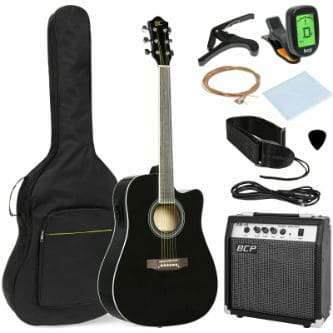
History of occurrence
The beginning of the XNUMXth century was marked by a number of experiments on the electrical amplification of the vibrations of instrument strings. They were based on the adaptation of telephone transmitters and their implementation in device designs. Improvements touched the banjo and violin. The musicians tried to amplify the sound with the help of push-button microphones. They were attached to the string holder, but due to vibration, the sound was distorted.
The electro-acoustic guitar appeared in the late 30s long before the appearance of the electric guitar. Its capabilities were immediately appreciated by professional musicians who lacked the volume of the reproduced music for “live” performances. The designers found the correct characteristics by experimenting with microphones that distorted the sound and replacing them with electromagnetic sensors.
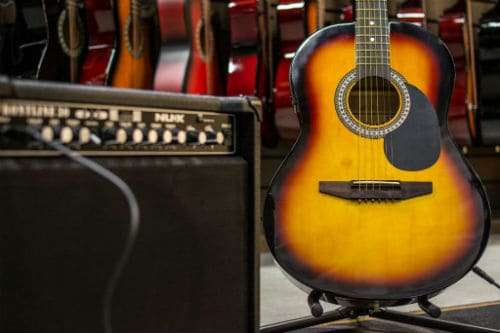
Recommendations for selection
There are many varieties of electric acoustic guitars. For beginners, it is better to start learning with a conventional 6-string acoustic. Professionals are based on their own preferences, features of use, the need to work on stage or in a recording studio. To understand how to choose an electro-acoustic guitar, you need to know the features of its device. The main difference lies in the installed sensors. They can be:
- active – powered by batteries or connected by an electric cord to the remote control;
- passive – do not need additional power, but sound quieter.
For concert performances, it is better to purchase an instrument with an active piezoelectric pickup. When choosing, you should also take into account the types that are used in different genres:
- jumbo – used in “country”, has a loud sound;
- dreadnought – distinguished by the predominance of low frequencies in the timbre, suitable for performing compositions in different genres and solo;
- folk – sounds quieter than dreadnought;
- ovation – made of artificial materials, suitable for concert performance;
- auditorium – differs in the qualitative characteristics of the solo parts.
Confident players can transition to a 12-string guitar. It requires learning specific playing techniques, but has a great, rich sound.

Using
Electroacoustics is a tool for universal use. It can be used both when connected to the network, and without it. This is the main difference between a member of the string family and an electric guitar, which is impossible to play without being connected to an electric current.
Electro-acoustic guitars can be seen in the hands of Andrei Makarevich, Boris Grebenshchikov, frontman of the ChiZh and K band Sergei Chigrakov and Nautilus soloist Vyacheslav Butusov. They were masterfully owned by hard rock stars Kurt Cobain, Ritchie Blackmore, the immortal Beatles. Jamens and folk music performers fell in love with the instrument, because, unlike an acoustic guitar, it allows you to calmly move around the stage, creating not only music, but also a full-fledged show.



